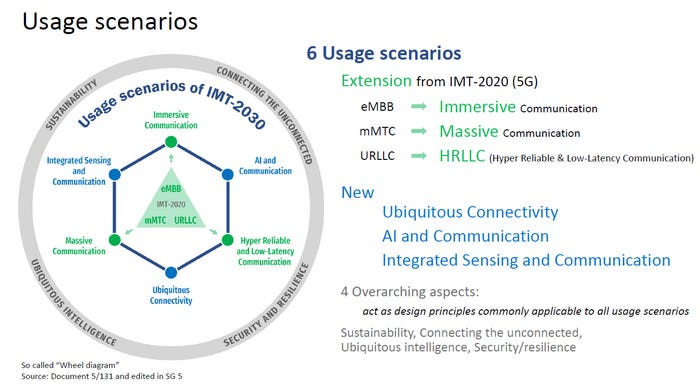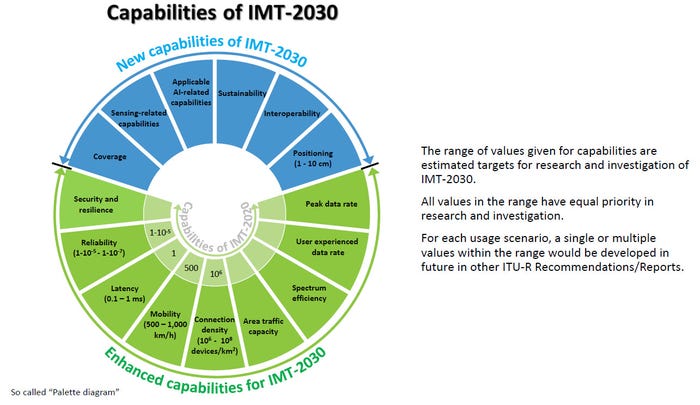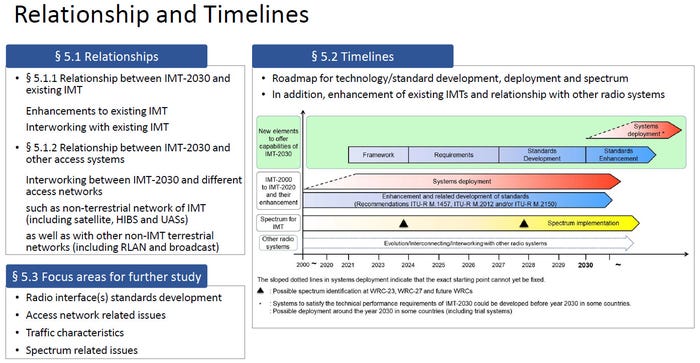Ericsson and e& join forces to explore 6GEricsson and e& join forces to explore 6G
Swedish kit vendor Ericsson has signed a memorandum of understanding with UAE operator e& with the aim of trying to work out what the point of 6G is.
November 12, 2024

It’s never too clear what purpose MoUs serve, other than as a performative statement of intent. Still, you have to start somewhere, and the stated aim of this one is ‘the collaborative exploration of 6G technology, its use cases and future network evolution.’ What’s more, it ‘will include a series of technical discussions and engagements aimed at jointly exploring key 6G technology concepts.’ You can’t say fairer than that.
“We have barely scratched the surface with 5G which will overtake 4G and become the dominant mobile technology after 2027 and, with 5G Standalone and 5G Advanced, realize its transformative potential over the next several years,” said Ekow Nelson, Head of Global Customer Unit for e& at Ericsson Middle East and Africa.
“At the same time, we have started the proactive approach to 6G research with our partners to shape the next generation of mobile networks. Collaborating closely with e& UAE, we aim to leverage our shared expertise to drive progress in the development of 6G for the United Arab Emirates, and the wider region."
Since we have barely scratched the surface of 5G five years after its launch, it may be a tad premature to start getting excited about the possibilities of 6G. Nonetheless, the Ericsson announcement insists 6G is expected to offer a step-change in the future of communication by merging the digital and physical worlds into a seamless reality enabled by trustworthy systems, cognitive networks, and a pervasive network compute fabric.
Another company keen to whet our appetite for future technologies is telecoms and tech R&D specialist Interdigital, which welcomed media and analysts to its new London office yesterday. It was an informal affair with a few presentations and plenty of unstructured chat afterwards, including with former Telecoms.com Podcast guest Rajesh Pankaj.
We got the opportunity to flesh out the vision behind 6G with one of the companies deeply involved in its development. With mobile broadband having been more of less perfected with 4G, it has been hard to identify 5G’s unique selling point, especially to consumers. If 6G follows the trend of perfecting the technological paradigms introduced by the preceding G then it will inherit 5G’s identity crisis, but that doesn’t mean it won’t introduce a bunch of new technological capabilities.
Conversation moved towards the IMT-2030 framework that was published in June 2023 and is apparently still the foundation of all things 6G. The 5G triangle forms the basis of the 6G hexagon, which adds AI, ubiquitous connectivity and integrated sensing to the mix. You can see that below, along with the associated new and enhanced capabilities and timelines.



The sensing play seems the most novel new feature, in which mobile networks will be able to function as a kind of radar that is somehow aware of physical environments. As is often the case, this tech will be made available with few explicit applications, but on the assumption that clever people will find something cool to do with it as, for example, Uber did with 4G.
Given the relative anticlimax that has been 5G so far, it’s easy to scoff at any talk of 6G at this stage. But the Gs are a construct superimposed on a process of gradual innovation and refinement to give marketing people something to do. Since that's a once in a decade opportunity to hype the mobile telecoms space, it’s too much to hope they won’t do so once more with 6G, but the rest of the industry is likely to be more muted until the elusive ‘killer app’ reveals itself.
About the Author
You May Also Like










.png?width=300&auto=webp&quality=80&disable=upscale)


_1.jpg?width=300&auto=webp&quality=80&disable=upscale)